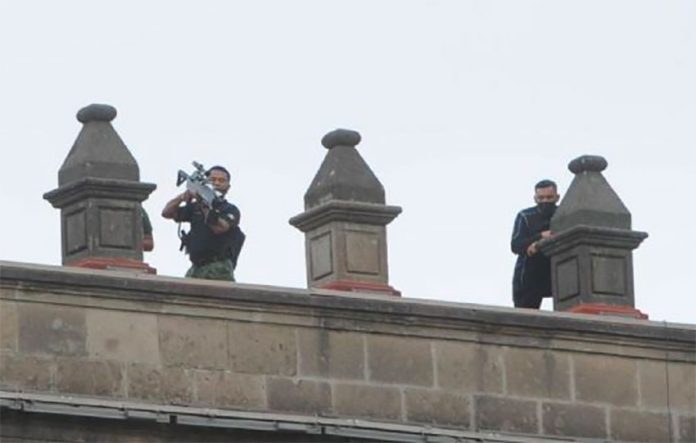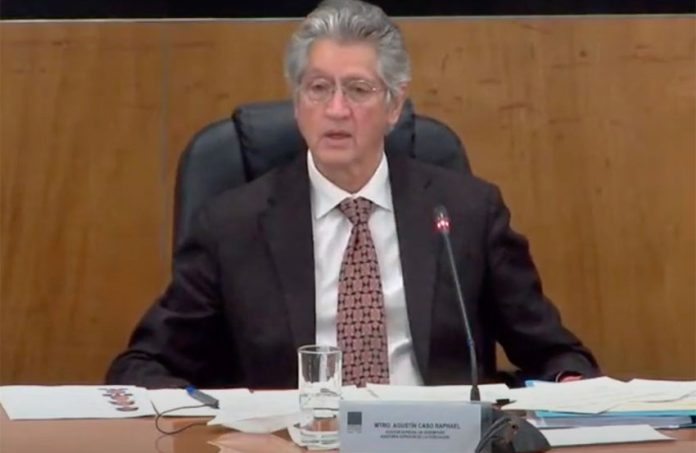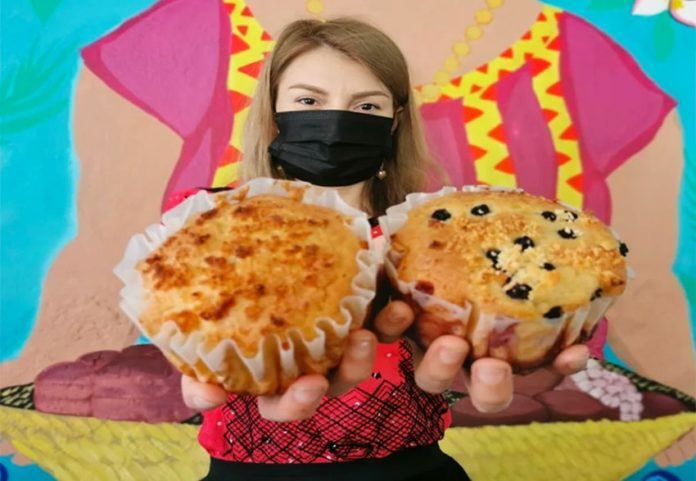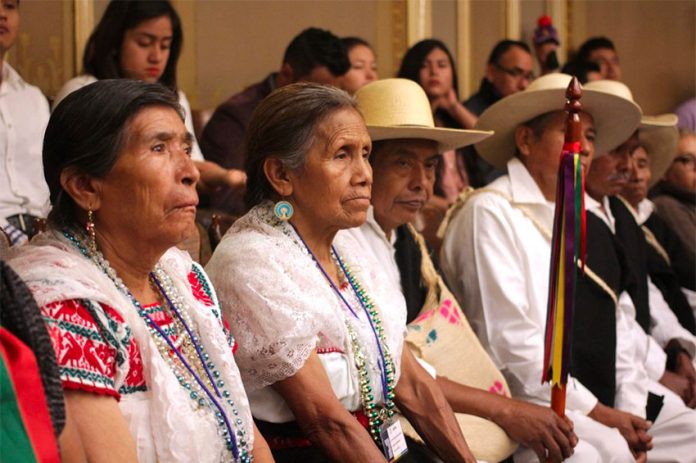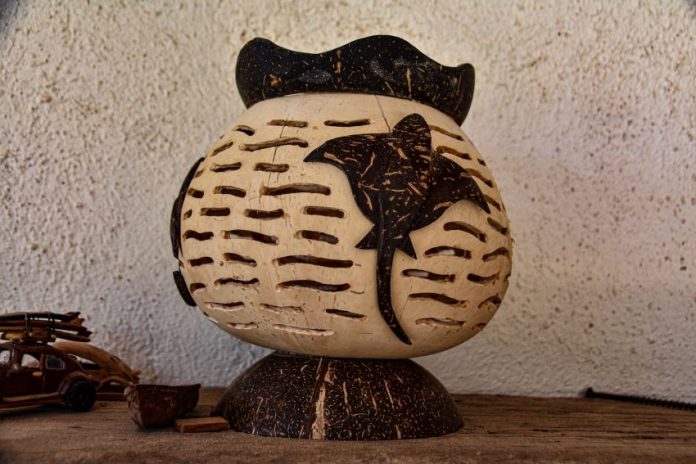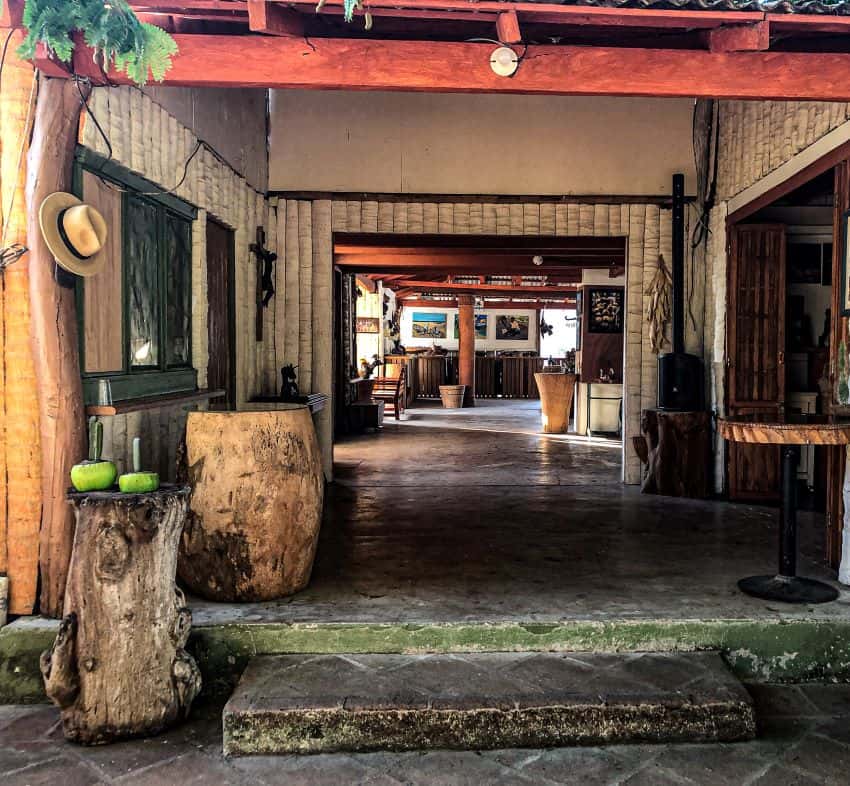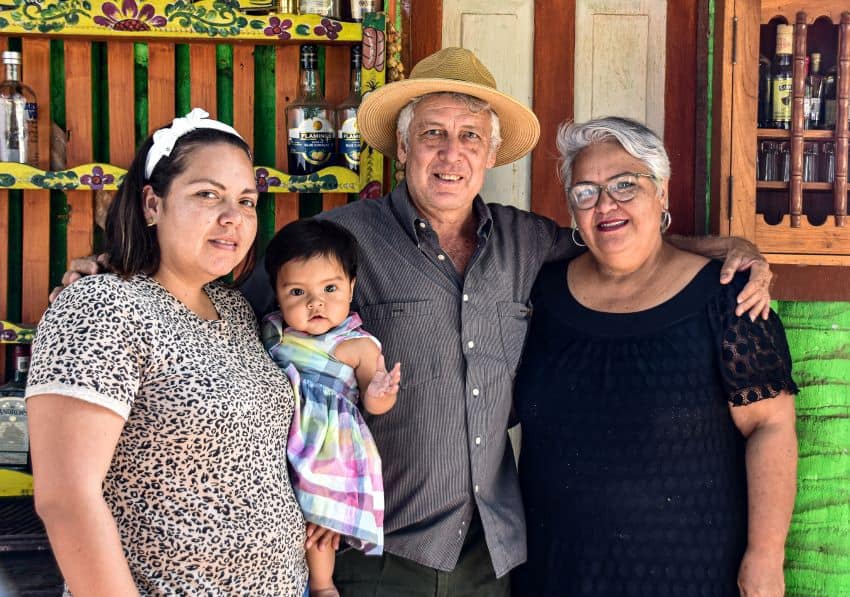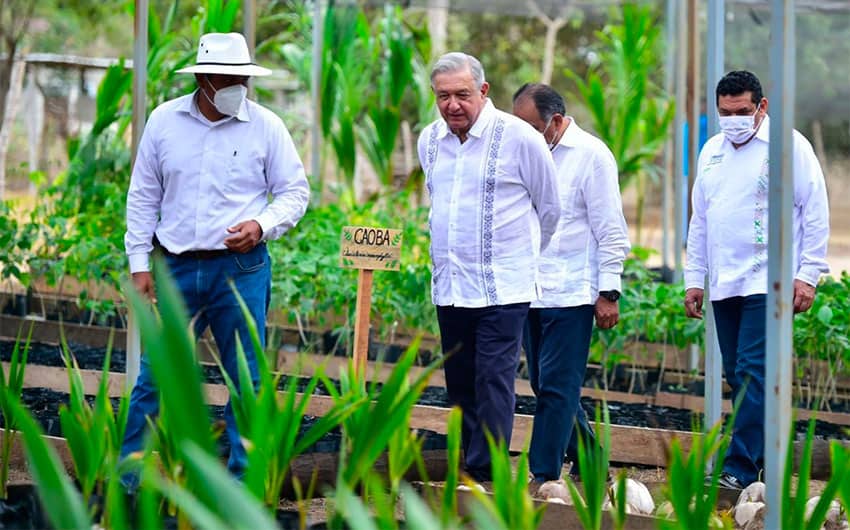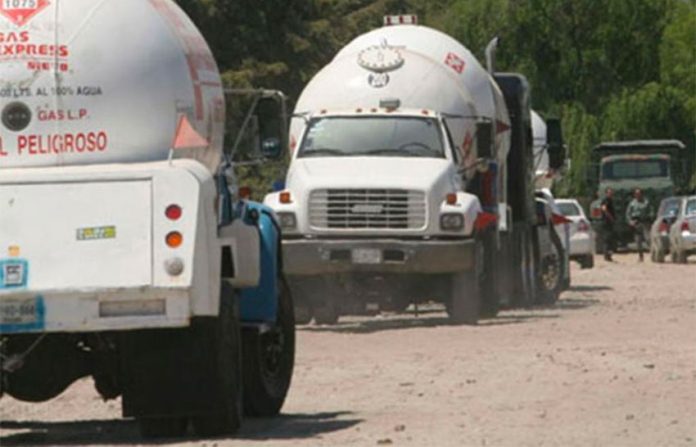President López Obrador has defended the use of anti-drone technology to prevent the unmanned aerial vehicles from flying over the National Palace during Monday’s International Women’s Day protest, claiming that they could have been used to attack the seat of government.
Members of the military were deployed to the roof of the National Palace and used drone defenders to stop any possible aerial incursion during the protest, a deployment that caused panic among some protesters as the devices resemble high-caliber weapons, especially from a distance.
Speaking at his news conference on Wednesday, López Obrador said that drones could have been used to start a fire at the National Palace or even drop a bomb on it.
He said an attack was possible because there are people who want to generate negative publicity for the government, which has been heavily criticized for inaction on women’s rights, and the country.
The president laughed off reports that the government had deployed snipers to the National Palace roof and said that he had information that radical protesters planned to set the main door of the building on fire.
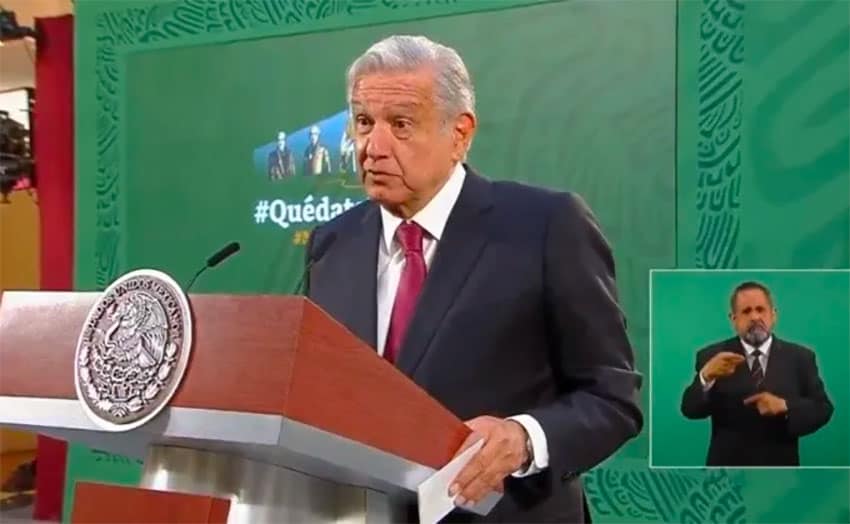
“I had information, it’s my job, I don’t have espionage groups but there is intelligence – what the people tell me. The intelligence is in the people, … the information I had is that they wanted to burn the palace door, … imagine that. So we had to install the wall,” López Obrador said, referring to the metal barricade erected around the National Palace before Monday’s protest.
The president also said Wednesday that he was not in favor of the prosecution of anyone who committed acts of violence during the event, among whom were men wearing hoods, according to the Mexico City government.
(There were clashes between protesters and police and the former succeeded in pulling down a section of the barricade. More than 60 police and about 20 protesters sustained injuries.)
“My opinion is that nobody should be prosecuted because above all they’ll feel like victims. There shouldn’t be any punishment. I believe that the punishment in this case is the public condemnation for what they did. The people don’t look kindly on the use of violence, besides it’s a contradiction,” López Obrador said.
“I believe that the crudest, most terrible expression of machismo is violence. Machismo is violence. Therefore, how can those against machismo exercise violence?”
The president said there are millions of women in Mexico fighting for equality and justice and asserted that their struggle is valid, legal and legitimate. However, López Obrador – who has been widely condemned for supporting the candidacy of an alleged rapist for governor of Guerrero – rejected the notion that he and his government should be the focus of women’s anger.
“We’ve been listening to the feelings of the people, men and women, for years and we are permanently fighting for [the rights of] women. In all the welfare programs, the majority of the beneficiaries are women and girls,” he said.
“… I’ve always attended to women, it’s a conviction, we don’t have any conscience problems because we’ve always supported women and the poorest women, those who were abandoned [by past governments],” López Obrador said.
At his press conference on Tuesday, the president said that provocateurs and infiltrators were responsible for violence at Monday’s protest. He also accused three foreign newspapers of not being objective in their coverage of it, claiming that they unduly criticized his government for provoking the violence because of its response, or lack thereof, to problems that afflict Mexican women such as gender violence.
The correspondents of The New York Times, The Guardian and Spanish newspaper El País are “representatives of companies that participated in the looting of Mexico in the neoliberal period,” López Obrador charged without providing any evidence to back up his claim. “They’re very annoyed because stealing and looting is not allowed anymore.”
Source: Reforma (sp), El Financiero (sp), El Universal (sp)
